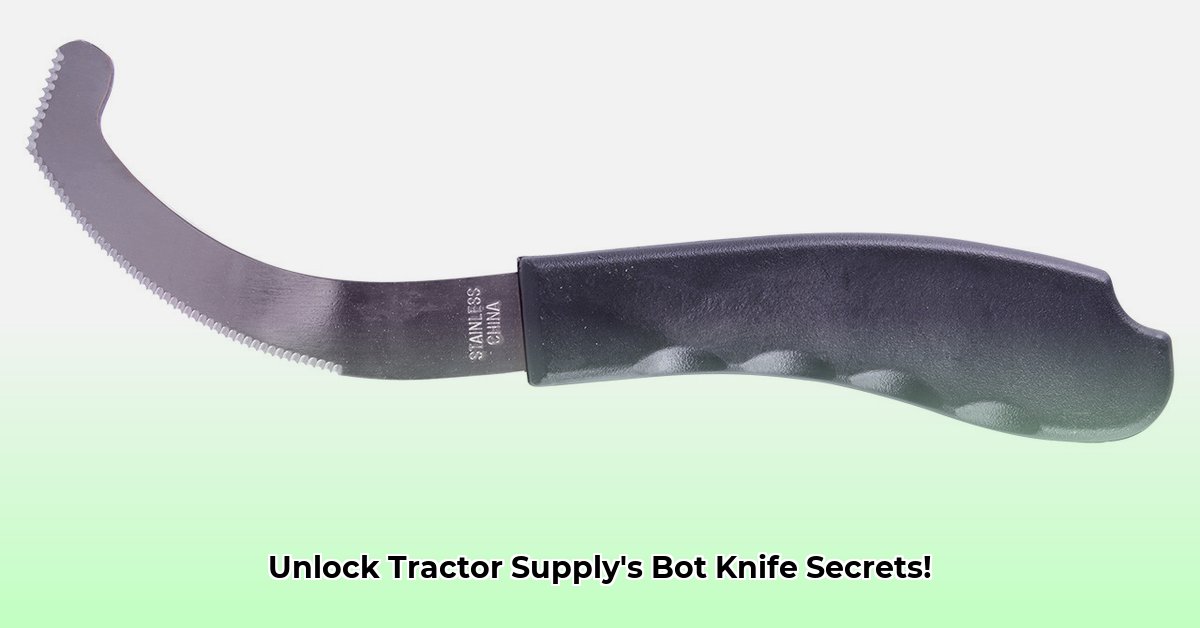
Bot Knives from Tractor Supply: A Guide to Increased Farm Efficiency
Finding the right tools can dramatically impact your farm's efficiency. This guide focuses on maximizing your productivity using knives available at Tractor Supply, often overlooked but crucial tools in various farming tasks. We'll explore how to select the right knife for your needs and how to optimize their use. For larger farms, consider tractor size requirements.
Choosing the Right Bot Knife: Matching Blade to Task
Selecting a farm knife isn't simply about choosing the first one you see. A dull or poorly designed knife is dangerous and inefficient. The ideal choice depends heavily on your specific farming tasks. Consider these questions:
- What materials will you be cutting? Tough rope requires a robust blade, while delicate plants need a more precise instrument.
- What is your budget? Prices vary widely based on materials and features.
- What level of durability do you need? High-use scenarios demand high-carbon steel blades for longevity.
- How important is ease of maintenance? Stainless steel options are often easier to clean and maintain.
These factors help determine the optimal blade material, length, and type (e.g., serrated) for your needs.
Key Features to Consider in a Tractor Supply Bot Knife
Several key factors differentiate high-performing knives:
- Blade Material: High-carbon steel blades often hold their edge longer, crucial for frequent use. Stainless steel offers easier maintenance but might not stay razor-sharp as long. "The superior edge retention of high-carbon steel is a worthwhile investment for frequent users," notes Dr. Anya Sharma, Agricultural Engineering Professor at the University of California, Davis.
- Handle Design: A comfortable and secure grip is essential. This prevents fatigue and reduces the risk of accidents. Consider ergonomic designs and materials suitable for various weather conditions. "A poorly designed handle is a recipe for blisters, fatigue, and even injuries," Dr. Sharma adds.
- Blade Length and Type: Longer blades (6 inches or more) suit larger jobs, while shorter blades provide greater control for precision work. Consider a serrated blade for cutting certain materials.
- Safety Features: A robust sheath is vital for protecting both the blade and the user. Look for a secure and durable sheath to prevent accidental cuts.
Hypothetical Knife Comparison: Workhorse vs. Scout
To illustrate, let's compare two hypothetical knives, reflecting common options at Tractor Supply:
| Feature | The "Workhorse" (Heavy Duty) | The "Scout" (Lightweight) |
|---|---|---|
| Blade Material | High-Carbon Steel | Stainless Steel |
| Blade Length | 6 inches | 4 inches |
| Handle Material | Rubberized Grip | Durable Plastic |
| Sheath | Heavy-duty Leather | Nylon Belt Sheath |
| Price (Estimate) | $25 - $35 | $15 - $25 |
This highlights the trade-offs between durability and cost, and how to select a knife based on your specific needs.
A Step-by-Step Guide to Selecting Your Perfect Farm Knife
Follow these steps to ensure optimal selection:
- Define Your Tasks: Identify the primary uses for your knife.
- Set Your Budget: Establish a realistic price range.
- Read Reviews: Research user experiences online.
- Visit Tractor Supply: Physically examine knives, testing handles and blades for comfort and durability.
- Prioritize Safety: Choose a knife with a secure and reliable sheath.
Investing in a quality farm knife increases efficiency and reduces the risk of accidents. Take your time, consider your needs, and select a blade that boosts your farm's productivity.